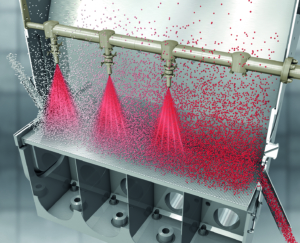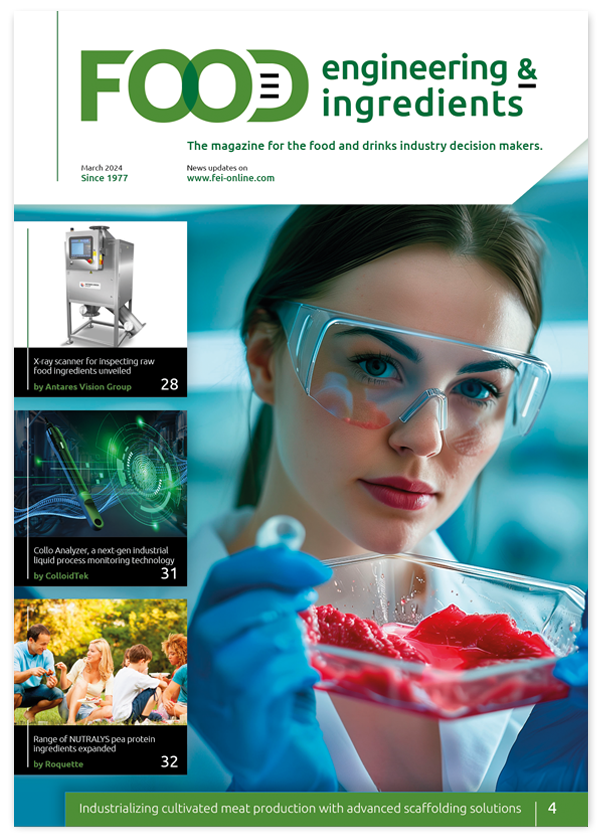Food, feed and pet nutrition: a convergence of industries
Food mega-trends such as added health benefits, natural raw materials and sustainable sourcing are becoming increasingly important for another large target group: animals. Even before the pandemic, the market for high-quality pet food was booming while the livestock feed market was going through a repositioning exercise. Ingredient suppliers are using their expertise to drive these industries forward.
A home isn’t a home without a pet! In fact, at least 38% of European households call an animal a member of their family and more than 8.5 million tonnes of pet food products — which corresponds to sales of €21.8 billion — were purchased in 2020 [1]. Gone are the days when pets were fed the leftovers from the dinner table. Given the strong parallels with the human food industry, there is growing interest in compound feed production in additives that help to increase production and contribute to animal health.
Multifunctional wheat ingredients
Aware that whether a raw material can be considered to be sustainable depends on transport routes, among other things, the Crespel & Deiters Group only uses EU wheat that only travels short distances. Popular in other industries, wheat starches and proteins are also suitable for feedstuff production: they complement the nutrient profile of animal feeds and come with added functional value. In 2020, the Crespel & Deiters Group launched dedicated pet food and feed ingredient brands (Trigea and Crespeo) to fulfil the special needs of various animals, manufacturer demands and contribute to sustainable and effective feeding.
Beyond human nutrition, proteins also play important roles in pet and farm animal welfare; Trigea comprises texturised wheat proteins that, once hydrated, emulate the fibrous structure and bite of meat. Furthermore, the portfolio of both brands includes wheat-based, hydrolysed protein components (Trigea’s Trigovit® Protein and Crespeo’s Crespovit® Protein). They can also be baked or used in pastes, dry kibbles, wet feed applications and treats for cats and dogs or for livestock feed. Also, they dissolve homogenously in water and add an extra portion of digestible plant-based protein to milk substitute products for puppies, kittens, calves and piglets. Like all of the company’s ingredients, their pregelatinised flours, Trigovit® Flour and Crespovit® Flour, are odour-free, tasteless and produce a milk-like consistency. Their solubility in cold water makes them very easy to handle for both pet food manufacturers and farmers. Subsequently, both brands offer special starch compounds (Trigovit® Starch and Crespovit® Starch), which are process stable and individually adjust the binding of the product in different contexts. The starches influence the viscosity of liquids and act as carriers for nutrients and flavourings. As a functional binder for pellets, the ingredient helps to regulate pellet properties such as texture, strength and stability, and thus prevents the pieces from crumbling. Especially in pet treats, the wheat starches improve both flexibility and crispiness (Fig.1).
Natural power from plants
In addition to processing benefits, manufacturers are looking for natural ingredients to satisfy consumer demand. To better understand their requirements, BENEO conducted a large-scale pet food survey that revealed that “natural” is a key purchasing driver. In this context, 54% of dog owners and 49% of cat owners indicated that whether or not a product is made with natural ingredients influences their interest to buy the product [2]. Nutritional information — such as a product’s protein content — is also “always” or “usually” a consideration for 69% of the pet owners questioned. BENEO’s non-GMO protein from rice and wheat have a protein density of approximately 80%, which makes them a highly concentrated source of vegetable protein and a sustainable alternative to pure animal sources.
Alongside the growing trend for all things natural, interest in allergenfree feed is also booming. BENEO’s clean label rice starch is a natural alternative to hydrocolloids (guar gum, for example) and modified starches in wet pet food. Internal research has shown that an inclusion of just 3–3.5% rice starch generates the same viscosity as a guar/xanthan gum mixture. Beyond its texturising properties, it also carries a range of nutritional benefits. These include being highly digestible, thanks to the small granule size of the rice starch, and being free from most common allergens. This means that it’s ideal for use in products aimed at young or sensitive pets and in hypoallergenic pet foods.
The same survey [3] revealed that 83% of participants are highly concerned about the digestive health of their pet and that food rather than medication is becoming the preferred way to address this (Fig. 2). It’s not surprising then that BENEO’s prebiotic chicory root fibres, Orafti® Inulin and Oligofructose, are proving to be particularly popular among pet food producers. They help to enhance the digestive health of many animals, including cats and dogs, by supporting better bowel function. The prebiotic effect of chicory root inulin and oligofructose on the human and animal digestive tract has been studied extensively for almost three decades.
Healthy joints for an active life
An intact digestive system isn’t the only field in which the composition of feed stuff can improve the health and mobility of animals. To keep ageing animals active, GELITA developed PETAGILE®, an innovative ingredient based on pure collagen protein.
Osteoarthritis (OA) is a degenerative joint disease characterised by the progressive degneration of normal articular cartilage and subchondral bone, and typically causes pain and lameness leading to a reduced quality of life. The disease affects more than 20% of all dogs older than 12 months [4]. Similarly, 90% of cats older than 7 years show X-ray evidence of joint degeneration [5] and, likewise, there is also a high incidence of OA among horses.
Given that many pet owners will do everything they can to help their four-legged companions stay physically mobile and healthy, GELITA’s specific Bioactive Collagen Peptides (BCP®) in PETAGILE® promote joint cartilage metabolism, thus helping to counteract the wear on joints caused by ageing and excess load.
Being neutral in taste and odour, these highly purified collagen peptides are suitable for various pet food applications, including treats or complete wet and dry foods. According to preclinical and clinical trials, the oral administration of PETAGILE® has beneficial effects on mobility and generally contributes to the maintenance of joint health by preserving flexibility and quality of life. In elderly animals, for example, it increases activity and aids wellbeing. Various international bodies have declared collagen peptides to be safe, natural (no E-number required) and ideal for use in clean-label concepts (Fig. 3).
Sustainable, science-backed antioxidants
Sustainability is another major driver in the animal food industry, making microalgae an excellent natural resource. AstaReal® astaxanthin from Haematococcus pluvialis is one of nature’s most powerful antioxidants, which are equally beneficial in both human and animal health. With NOVASTA®, AstaReal has developed an effective and scientifically backed pet food ingredient that’s suitable for use in a wide array of applications: from dry and wet food to treats, flakes and capsules.
Especially geared to the needs of active and working dogs, racehorses and livestock, it’s able to reduce exercise-induced inflammation, accumulate in muscle mitochondria, promote higher levels of endurance and accelerate recovery (Fig. 4). A study with 10 high-performance husky pointers revealed faster recovery among those who consumed a high-carb, high-protein bar with added astaxanthin. The dogs fed with natural astaxanthin did not deplete their carbohydrate stores and only had a 4.1% drop in plasma glucose levels; the others, with no added astaxanthin, showed a drop of 34% [6]. In addition, algae-derived feed ingredients such as astaxanthin can improve the livestock value chain. For farmers, obtaining the highest possible yield from cattle, pigs, sheep, poultry and other animals is key. The best way to achieve this is by nourishing and safeguarding their health. In dairy cows, for example, astaxanthin can reduce the incidence of mastitis [7]. Replacing livestock owing to illness incurs significant economic and environmental costs. Owing to its antioxidant activity, astaxanthin provides scientifically proven benefits for animal wellbeing and general health, thus supporting agricultural productivity.
Technological advantages from fluidised beds
The health benefits of today’s feed ingredients are vast. However, processing them can be challenging. Functional or active ingredients such as vitamins or probiotics, enzymes, yeasts, essential oils, proteins or microorganisms must be optimised and adapted for industrial processes, storage and feeding conditions. Their efficacy depends on their release profile (being pH-dependent, for example), which should be aligned with digestive processes. Granules and dry feed pellets offer convenient dosing options, especially those that are dust-free, temperature-stable and freeflowing. Plus, with fluidised and spouted bed equipment, liquids can spray granulated or enclosed in microcapsules for convenient administration (Fig. 5).
Dusty particles that tend to segregate can be spray-agglomerated into coarser powders and subsequently coated. Glatt Ingenieurtechnik, a leading global plant manufacturer and process expert, offers feed producers process development, technology and plant expertise from a single source. Liquid enzymes, for example, can be converted into abrasion-resistant granules with a homogenous, onion-like structure by means of spray granulation. The thermal conditions are so gentle that enzymic activity is preserved and can be adjusted with an additive or a carrier powder. Enzyme powders can be spray-agglomerated with the aid of a binder to form coarser particles that do not segregate. An intermediate coating process helps to counteract the effects of heat and moisture during subsequent pelletisation. A final film or hot-melt coating masks unpleasant tastes or odours. Coatings can also contain vitamins or minerals to protect sensitive nutrients against oxygen, moisture and temperature fluctuations. If particularly fine, temperature-sensitive, dwell time-sensitive or sticky particles are required, spouted bed is the process of choice. The different fluid mechanics and process dynamics allow for controlled circulation dynamics with higher heat and mass transfer rates in shorter residence times.
Conclusion
Health-promoting ingredients are undoubtedly in demand and there’s no question that longstanding food producers will fare equally well in the animal nutrition sector. Sustainability is a key issue for both pet food and feed compound manufacturers, as well as the global end user base. Optimised animal feeds will deliver resource savings throughout the entire chain and, in the long-term, help to reduce the onus on antibiotics for overall health.
References
1. The European Pet Food Industry (FEDIAF), European Overview Facts & Figures 2020.
2+3 BENEO Consumer Research on Attitudes towards Pet Food in the US, Brazil, UK, Germany and China (N=5*500) (2018).
4. Todhunter RJ, Johnston SA (2003) Osteoarthritis. In: Slatter D (ed) Textbook of small animal surgery. pp 2208-2246.
5. Kerwin SC (2010) Osteoarthritis in cats. Top Companion Anim Med 25:218-223.
6. Zanghi BM et al.(2015): Effects of postexercise feeding of a supplemental carbohydrate and protein bar with or without astaxanthin from Haematococcus
pluvialis to exercise-conditioned dogs. Am J Vet Res.;76(4):338-50.
7. National Center for Biotechnology Information. PubChem Patent Summary for US-6335015-B1, Method of the prophylactic treatment of mastitis.








